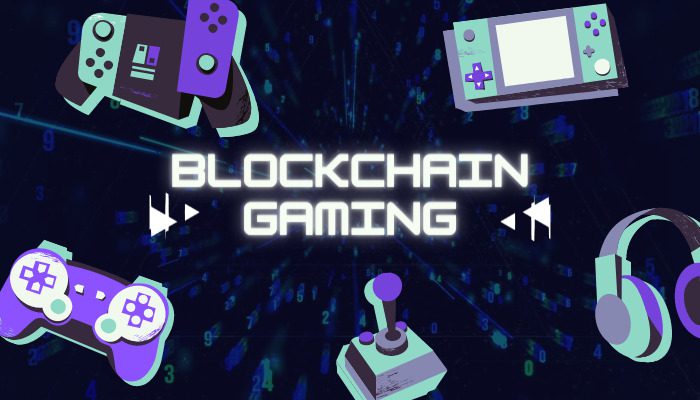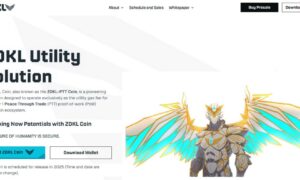For blockchain games to make mainstream impact, developers need to think beyond NFTs. With new tools and creative approaches, decentralization doesn’t have to limit the gameplay options.
It’s an exciting time for decentralized games. Indie studios are churning out titles based on distributed ledger technology. Big names from Ubisoft (creator of Assassin’s Creed) to Square Enix (Final Fantasy) are exploring ways to use blockchain. And investors are pouring cash into this small but fast-growing segment of the global gaming market, which is currently worth $198 billion overall. So why does it still feel like an unloved niche?
For many gamers, the problem is simple: blockchain games need to be more fun! Development has been hampered by technological challenges that can make gameplay feel sadly limited – a far cry from the rich experiences audiences have come to expect. Those who are already excited about Web3 may be attracted by the promise of meaningful ownership, and real participation in the game governance. But beyond the much-trumpeted play-to-earn opportunities (which could threaten to turn a stress-relieving hobby into a second job), traditional gamers might not see the attraction.
What blockchain games do best
It’s worth considering why game developers should care about blockchain at all. Given that it’s a new, complex technology with a steep learning curve and a lot of hurdles to overcome, what makes it worth the effort?
Just as in other sectors, decentralization in itself is a draw for many, offering a chance to redefine power structures while improving security and privacy. But it can be hard to untangle the arguments around the ownership angle. Blockchain gaming is often assumed to mean simply “games with NFTs” and is reduced to the potential financial rewards on offer. But the control that comes with on-chain games means a lot more. Beyond tradable resources, ownership in blockchain gaming means players have more control, even over the game itself. It can give them a say in deciding how the game develops, or ensure that the game continues long after the studio stops providing it (as long as enough committed players remain to share the costs of running the network). It can even make for a fairer, better gaming experience, since blockchain offers some innovative countermeasures against cheating. These are big pluses. They provide a powerful incentive for players to explore blockchain games – and a way to build serious engagement, which has obvious value for the game creators. But they are not enough to propel decentralized gaming to market dominance. To compete successfully with conventional rivals, blockchain games need to offer comparable quality. Engaging stories, immersive gameplay and stunning graphics – these are the basics of a good game. Unfortunately, they are often lacking in blockchain titles.
Where they struggle
The biggest problem is speed. Blockchain-based systems are inherently slow, a major hurdle given that massively multiplayer games are now the norm. The most popular game genres today are heavy on fast-paced action: first-person shooters, racing, battle royale and the like. However, blockchain is by nature unsuited to the kind of real-time responsiveness these games demand. Decentralized networks can’t keep pace with the volume of transactions in a typical game. Gamers experience latency (whether on blockchain or regular, centralized networks) as a frustrating lag between an action and its effect: their characters will not move as commanded right away. This limits the scale of the game, and restricts game design to simplistic activities like creating and trading assets, or turn-based games.
Another challenge is transaction fees – do the players have to bear rising costs if they get sucked into hours of play, or does it mean heavy charges for the developer? And what about confidentiality? In many games, the players may have secrets to protect. Does blockchain transparency mean their rivals can, literally or figuratively, see the cards they hold?
The technical complexity involved is also a significant barrier. Building a sophisticated blockchain game from scratch requires considerable specialist knowledge. Choosing the right network, designing a token and creating a system for safely storing gamer assets – these are just some of the challenges. Teams coming from the traditional space don’t always have the expertise, or the mindset. Decentralized gaming requires developers to cast aside assumptions about what makes a good game and to focus on different aspects, such as building a community and managing a marketplace. This means that there are likely to be skills gaps for anyone attempting to create a blockchain game, wherever they’re coming from: while traditional game designers will have a lot to learn about blockchain tech and philosophy, blockchain developers may well need help with building a satisfying game.
So what’s a winning strategy?
Given the range of challenges, there is an equally wide range of approaches to overcoming them. One solution is simply to focus on the kind of gameplay that is well suited to blockchain: hence the plethora of games based on trading, earning, breeding, mining or harvesting NFT assets. Of course, that cements the idea that NFTs are what blockchain gaming is all about. But it can be a lot more exciting than it sounds. The unique qualities of NFTs can be leveraged for excitement and unpredictability (such as in horse racing game ZED Run, in which players’ breeding choices result in different horse characteristics), or creative expression (as in crafting game My Neighbor Alice). The real-world value tied to NFTs can underpin complex economics in simulation or role-playing games such as Mirandus. Even battles can be integrated, so long as the outcome is determined by strategy rather than reflex, as on Chain of Alliance.
Still, to make a real impact, blockchain games will have to widen their scope. Games like Axie Infinity are already expanding beyond the NFT trading they were built on, with increasing emphasis on adventure, quest and roleplay elements, and that’s where it gets harder to take on the traditional titles.
Some of the scalability issues can be sidestepped by tackling different elements separately. For instance, the chain can be used only to store in-game assets, with the game engine on a centralized server, as demonstrated by the NFT-focused platform Enjin. That does make for better performance, but of course it also restricts the advantages. Similarly, Bluzelle provides a distributed data cache to speed up transactions, using a delegated proof of stake blockchain.
Xaya goes the other way, prioritizing pure decentralization at the cost of speed. Playing to blockchain’s strengths that way could well work out for games that are targeted at crypto true believers, even if it doesn’t serve to widen the appeal of the sector overall. Any developer with their sights set on the mass market, though, would need to approach it from the point of view of traditional gamers, not the blockchain community. That means prioritizing user experience, and overcoming blockchain’s hurdles.
That is getting easier. To start with, blockchain’s sluggishness is an issue for all industries that depend on high-performance processing systems. This means a lot of minds are working on the problem, and there has been progress. Bottlenecks have been reduced by developments ranging from new types of cryptographic processes to sidechains and other changes to network design. And on the infrastructure side, gaming-focused companies are creating tools to bridge the skills and performance gaps. These range from the Sandbox – a “no coding required” platform for creating simple games, comparable to behemoth Roblox – to Ajuna’s sophisticated toolkit for building blockchain games using the familiar Unity and Unreal engines.
We are at a turning point in gaming, where blockchain holds out the promise of user empowerment, powerful collaboration and deep immersion. We could even be entering the metaverse, taking many aspects of our lives into immersive, shared virtual spaces. But to get there, blockchain games will have to show that they can be so much more than just NFTs.
AUTHOR PROFILE
Nicholas Douzinas is co-founder and head of business development at Ajuna Network, a Switzerland-based decentralized platform for blockchain gaming and GameFi. Before that, he founded or co-founded the companies Ebakus Blockchain, hoolio, and emaginal AG. He holds a B.S. in economics from the University of Warwick and an M.Sc. in international health management from Imperial College London.


































